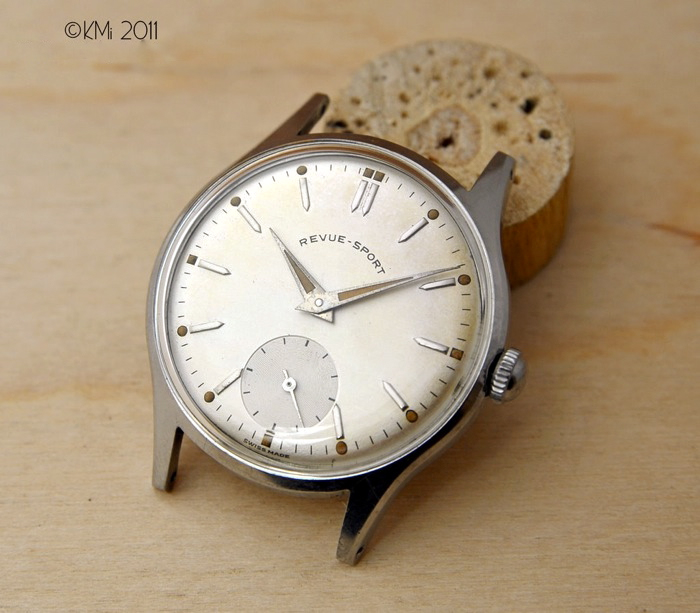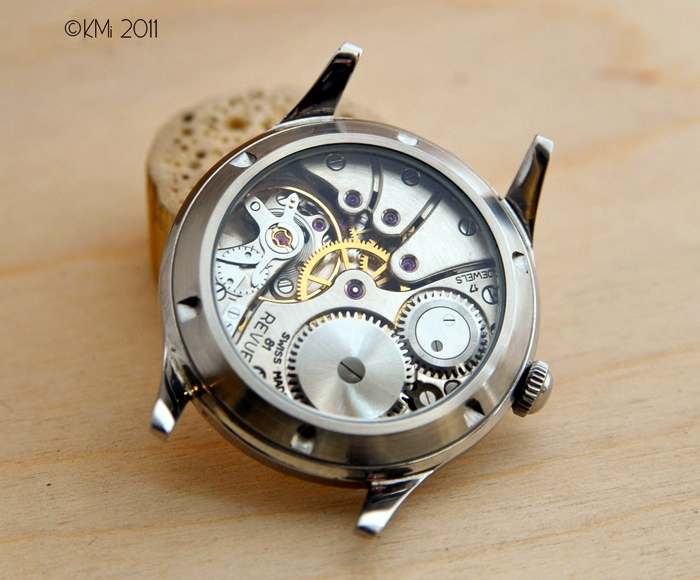当前离线
- 注册时间
- 2010-8-28
- 在线时间
- 小时
- 帖子
- 积分
- 23527
- 主题
|
Vintage: Reveling in the Less ObviousDate: Jun 21, 2011,15:15 PM - (view entire thread)[url=]
[/url][url=][/url][url=][/url]
There are, of course, many pleasurable aspects of vintage watch collecting. Some are obvious, while others are more likely to reveal themselves only after years of experience. In the latter category, I find myself taking increasing pleasure in discovering and acquiring nice examples of particularly appealing models made by less well-known manufacturers. I say that not because such watches are usually obtainable for relatively modest sums – though that is a nice tangential advantage – but because in my view, virtually all brands in what collectors would characterize as the “mid-range” category produced at least one or two truly excellent models during the golden era of the 1950s and ‘60s.
What I mean by “truly excellent” is that the aesthetic design, coupled with the relative quality of the movement, set a high standard for what was possible within the context of the manufacturer’s market, and given cost constraints.
A few months ago I acquired a nice example of a watch that I believe illustrates the above. It is a Revue Sport from the early ‘50s, featuring a cal. 81 movement. Revue Thommen, as it is known today, is probably best known for its Cricket model, the world’s first acoustic alarm wristwatch. The company also manufactured high quality precision instruments for the aviation industry.
During the golden era, Revue developed a particularly nice and interesting movement in the cal. 81. This movement was used in a variety of their models, including the Centenaire. They were produced in both 17 and 19 jewel iterations, and a large majority were copper plated.
The movement is of a high quality, and incorporated a Glucydur balance and Nivarox hairspring. It was most notable, perhaps, for its eccentric regulation system, a system which, to paraphrase my watchmaker, is more complicated than necessary but works quite well. The cam used to adjust the regulator arm allows for very fine regulation, and, having just received a first-class service, the subject watch is running well within chronometer standards. In fact, the watchmaker who serviced it and made the display back seen below, Keaton Myrick, told me that the “delta” (i.e. the greatest difference in time lost or gained between all positions) was a remarkable three seconds.
As I tend to prefer silver colored movements, I was quite happy with this less common version of the cal. 81. The material used is called “German silver” by watchmakers. It is a nickel derivative, and includes some zinc. It is corrosion resistant (so no need for plating) and machines well. Many high-end wind instruments are made of German silver (e.g. flutes and saxophones), and in the watch world, Lange & Sohne still uses the (relatively expensive) alloy for its plates and bridges.
To my eye, this watch was well designed throughout. The case, dial, hands and crown are all straightforward and attractive. Given the quality and aesthetics of the movement, it was an easy decision to have a display back made. And last but not least, who can resist beautifully applied and patinated luminous material?
As a final note, I hope that this brief essay might inspire one or two collectors with limited funds to recognize that there are indeed treasures within their reach, as when it comes to vintage watch collecting, knowledge, perseverance and luck can, at times, render the size of one’s bankroll irrelevant.


|
|
